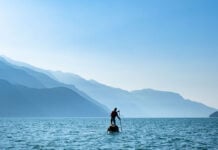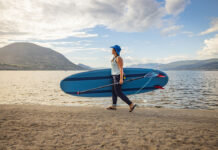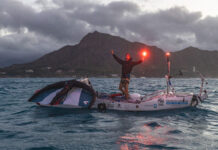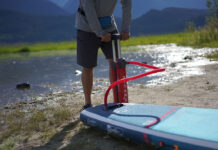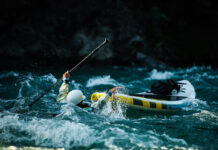Whether you want to paddle fast, paddle far or just paddle with your dog on board, it all starts with good balance. Spending time on your board is the best way to enhance your stability. The more you paddle, the more comfortable you’ll get and the sooner you’ll be able to safely venture off mirror-flat water into gradually more challenging conditions. The five simple tips, skills and strategies below will make you feel more confident and stable on your board.
Olympian’s 5 SUP stability secrets
1 Trust your paddle
Your paddle is vital not only for propelling you forward but for balance as well. First off, you brace with your paddle blade to find support and stability whenever you feel like you’re losing your balance. Secondly, holding a long pole-like object in your hands helps enhance balance—think of the poles tightrope walkers use. However, the most important way a paddle enhances stability is by supporting some of your body weight during the pull phase of the stroke. If you’re reluctant to put any weight on your paddle blade, all your weight stays on the board. If you can learn to trust your paddle enough to take some of your body weight, you’ll paddle more efficiently, go faster and feel more stable.
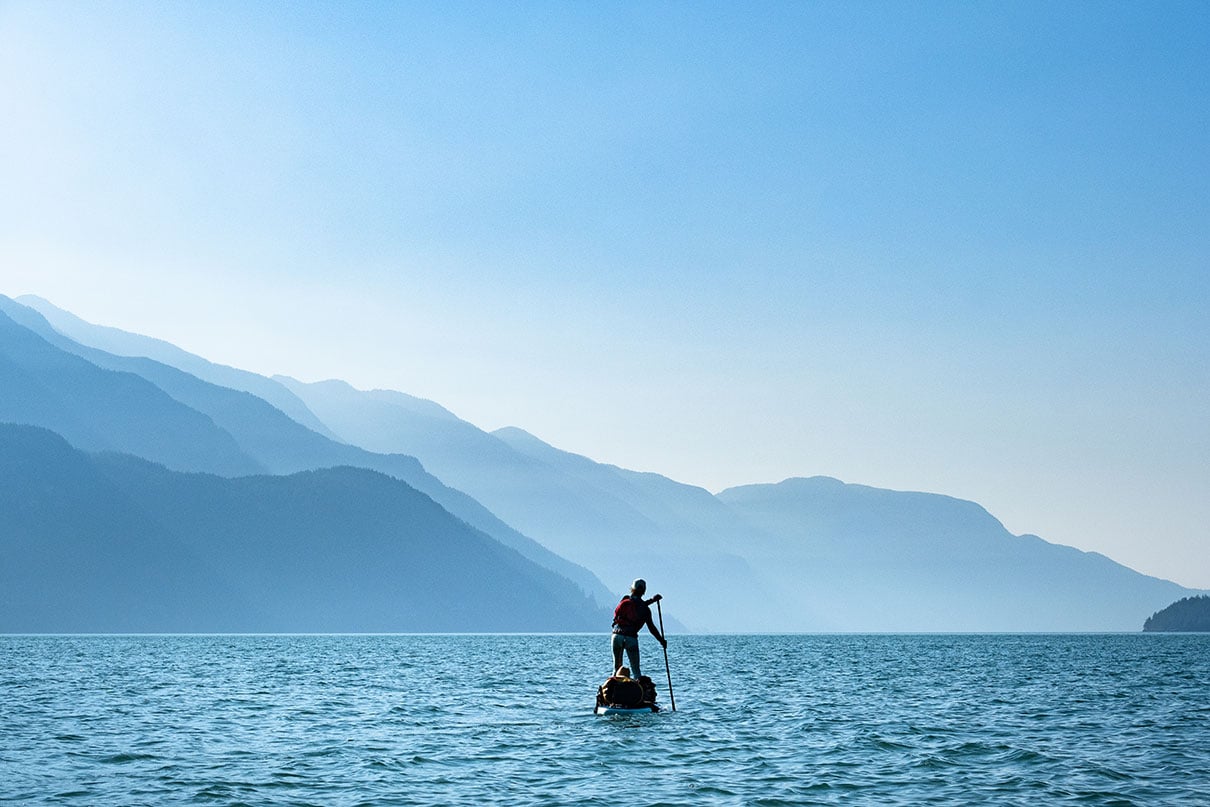
2 Get a little lower
If you bend your legs, both at the ankles and the knees, you’ll get a little lower and lower your center of mass in the process. This enhances stability. It also helps you absorb some of the wobbles and twitches your board will inevitably make without losing your balance. Try to relax your legs as you bend them. If you’re standing up stiff-legged, you’re like the mast on a sailboat and every time the board leans, you’ll lean with it. When you lean too far, your center of mass will be outside your base of support, and then you’ll be swimming. Practice loose, relaxed and bent legs.
3 Move your body more when you’re feeling unbalanced
It’s human nature to get cautious and move less when encountering ripples and chop. However, if you’re overly cautious, reluctant to move and stiffen up, you’ll feel less balanced. Instead, the best thing you can do is engage more of your body in the forward stroke, get more weight on your blade and focus on the rhythm of your paddling. This rhythm and body motion will become the dominant movement rather than the side-to-side wobbling of your board. Again, it may seem counterintuitive, but the more you focus on your paddling rhythm and getting your body into your stroke, the more relaxed you’ll be and the less you’ll notice any feeling of instability.
4 Get to know your board
Every board has its stability characteristics. Primary stability is basically how twitchy the board feels underneath you. If your board has good primary stability, it will feel solid and be easier to learn to trust your paddle and focus on your paddling rhythm. If your board feels twitchy, you should experiment with its secondary stability. Every board will reach a point where it leans and then stops. If you can determine where your board will stop leaning and stabilize, it won’t bother you as much when it twitches. You can just let it wobble underneath you and absorb that wobble with your relaxed legs, comfortable in the knowledge that it will stop, stabilize and allow you to bring it back to level. Spend time near the dock or shore on a sunny day when the water is warm and play with your board’s stability. Try to make it lean to the point where it won’t lean any farther. Trusting in the board’s secondary stability will be an ace up your sleeve and give you confidence whenever you feel your board is starting to wobble underneath you.
5 Practice your footwork
Being able to comfortably move around on your board is important. If you’ve invested some time in learning the secondary stability of your board, you can then experiment with first lifting one foot, then the other, and eventually taking cross-steps backward and forward up and down the middle line of your board. This helps give you even more confidence on your board and learn to relax when paddling, and it allows you to move up and down your board to keep it trimmed correctly when paddling into or with waves. To get comfortable with the cross-step motion, a good drill you can do on land is cross-step up and down an eight-foot-long two-by-four you can get for $10 at any building supply store. This drill not only helps you develop the coordination the cross-stepping motion requires, but also helps heighten the proprioception in muscles in your feet and lower legs, which will help you better identify and react to the board wobbling and twitching underneath you on the water.
Larry Cain is an Olympic champion in canoe sprint, a SUP athlete, and a coach of both canoe and SUP athletes. He is cofounder of Paddle Monster, which provides online coaching and education for paddlesports athletes around the world.
“Balance is key. Balance good, everything good. Balance bad, better pack up, go home.” —Mr. Miyagi, The Karate Kid | Feature photo: Cory Leis



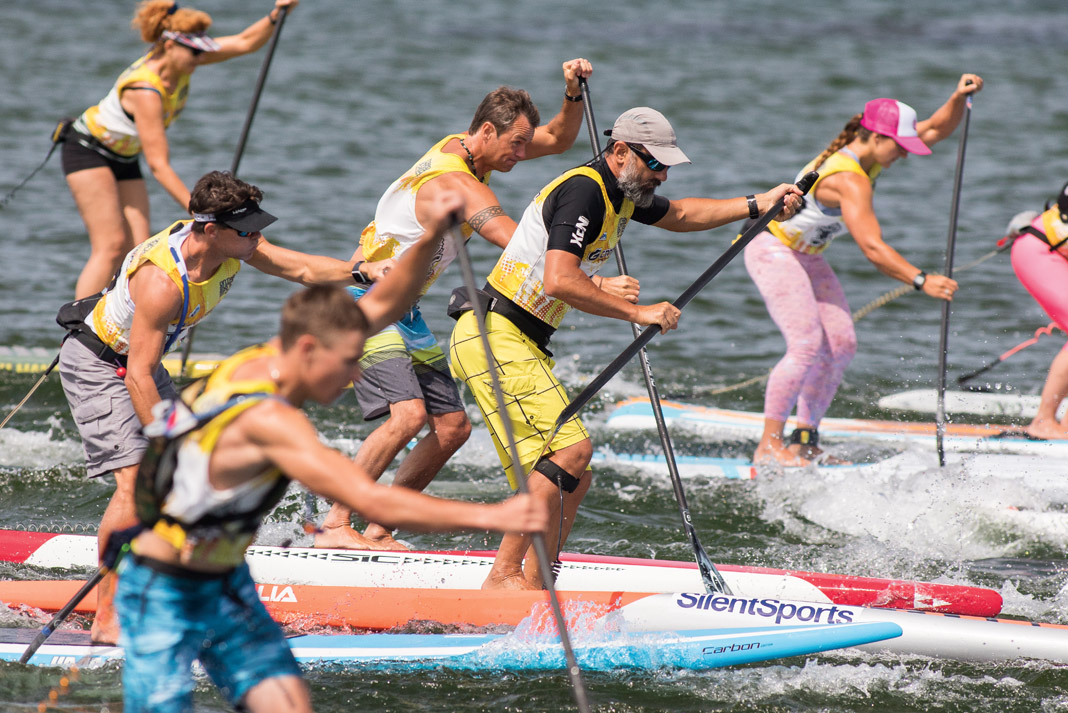
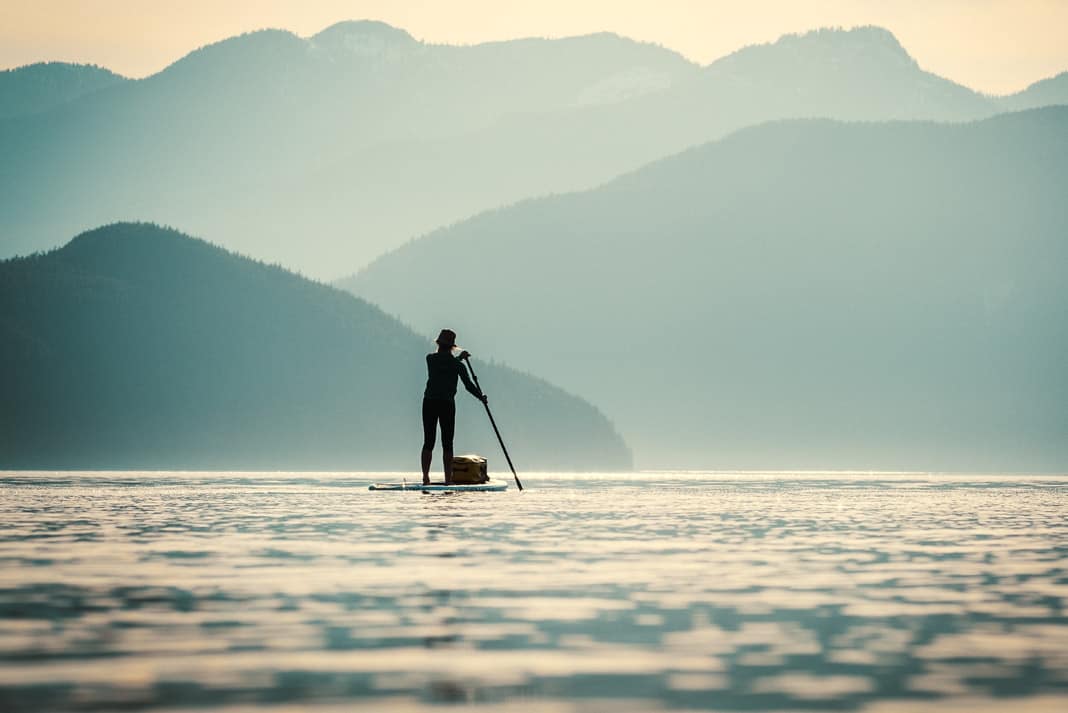
 This article was first published in Issue 72 of Paddling Magazine.
This article was first published in Issue 72 of Paddling Magazine. 